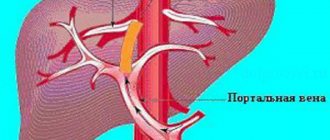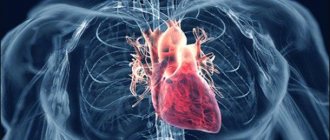Almost everyone knows about the dangers of arterial hypertension. However, low blood pressure (BP) is also a risk to the life and health of the patient. What is dangerous about low blood pressure in a person and what indications are considered critical is not known to everyone.
Blood pressure is considered low if its value deviates from the norm downward by 20 percent or more. According to statistics, the condition is found in every 4 inhabitants of the planet. In Russia, 3 million people are diagnosed with arterial hypotension. Every year, the disease and its consequences claim the lives of 300 thousand people in the world. What kind of low blood pressure is dangerous for life, the numbers on the tonometer and their meaning, the consequences of arterial hypotension - we will consider further.
General concept of blood pressure
To find out the answer to the question of why low blood pressure is dangerous, it is necessary to consider the term blood pressure itself. This is a vital indicator indicating the excess of pressure in human vessels above atmospheric pressure. The value of blood pressure depends on the characteristics of the patient, his age, habits, and lifestyle. It is determined by calculating the amount of blood pumped by the heart muscle over a certain period of time.
Over the course of life, blood pressure may change. Physical and emotional overload can also lead to fluctuations. Minor deviations in the indicators are observed depending on the time of day.
Table 1. Normal blood pressure for people of different ages.
| Upper indicator | Lower indicator | |
| 15-21 | 110-120 | 65-80 |
| 21-40 | 120-130 | 65-80 |
| 40-65 | no more than 140 | no more than 90 |
| 65 and older | no more than 150 | 90 |
The generally accepted norm for a healthy adult is blood pressure, the value of which is within 140/90 mmHg. Pulse pressure (the difference between the upper and lower readings) should be between 30–55 mmHg.
Development of the disease
The pathogenesis of hypertension may vary depending on the origin of the disease. In the essential (primary form), the vessels themselves change, so determining the cause of the increase in pressure is often very difficult. The symptomatic (secondary) form of the disease occurs due to disruption of various body systems.
There are several mechanisms for the development of arterial hypertension:
- Nervous. Prolonged psycho-emotional stress leads to depletion of vascular regulation centers in the central nervous system, since reflex and humoral factors are involved.
How does hypertension affect various organs?
- Renal. The kidney performs a barostatic function (maintains the level of systolic blood pressure) using a complex feedback mechanism that involves receptors, hormones and central nervous regulation.
- Hereditary. Due to a genetic defect in cell membranes, a disturbance in the distribution of intracellular calcium occurs, as a result of which the arterioles contract, which leads to an increase in blood pressure.
- Reflex and hormonal. The role of neurohumoral regulation is based on the activity of pressor and depressor factors. Activation of the sympathetic nervous system in response to stress leads to increased blood pressure.
The benign form of arterial hypertension is manifested by short-term vasospasm. With the further course of the disease, pathological changes in blood vessels (atherosclerosis, cardiosclerosis) spread. The last stage of arterial hypertension is very dangerous, since it causes secondary changes in internal organs. Sometimes it's deadly.
Memo on the prevention of hypertension
Very low pressure
In absolute terms, low blood pressure is 90/60 mmHg or less. However, there are some criteria to determine whether low blood pressure is dangerous in a particular case:
- Hereditary predisposition. For some patients, low blood pressure values have been normal since birth. Such indicators do not cause discomfort and do not affect performance. The consequences of low pressure in this case are also not detected. In some cases, normalization of indicators is influenced by changes in diet or sleep patterns.
- Pathological condition. If a decrease in pressure leads to nausea, dizziness, and decreased performance, then we are talking about arterial hypotension. In this case, the danger of low pressure is very noticeable. Predominantly arterial hypotension is a secondary diagnosis.
Concept of blood pressure
Vision problems
The symptoms of arterial hypertension in the relative organs of vision are very diverse, which is due to differences in the structure of the vessels of the optic nerve, retina and membrane. Obvious changes in the fundus can only be determined when the patient is examined by a doctor. The degree of visual damage depends on the duration of high blood pressure and the time of contacting a specialist. Manifestations of hypertension:
- Angiopathy is dilation of the veins in the fundus, narrowing of the arteries. These symptoms are functional, that is, they resolve with proper and timely treatment.
- Angiosclerosis is a thickening of the walls of the arteries and a decrease in their lumen against the background of the listed symptoms.
- Retinopathy – hemorrhage in the retina, swelling, tissue damage. Visual acuity decreases regardless of the patient's age.
- Neuroretinopathy – the optic nerve swells and increases in size.
A correlation between changes in the fundus of the eye and complications in hypertension has been noted. Thus, if a patient was diagnosed with retinopathy, the risk of stroke increased significantly, even if the blood pressure level was currently close to normal. The possibility of left ventricular hypertrophy increases with changes in the retina.
What do the numbers on the tonometer mean?
Blood pressure characterizes the functioning of the body's cardiovascular system. To measure it, a device called a tonometer is used. The blood pressure value is recorded as two numbers:
- Upper. Displays blood pressure, which is recorded when blood is pushed out of the heart muscle. Its value is influenced by the force of contractions of the organ and the resistance that arises in the vessels.
- Lower. The numerical designation of diastolic blood pressure that occurs when the heart muscle relaxes. Reflects the resistance of the vascular walls.
Measuring indicators plays an important role in monitoring the state of the body, diagnosing a number of diseases, and understanding the processes of development and growth in children and adolescents.
50 mmHg Art.
We are talking about lower blood pressure. Such numbers on the tonometer are a deviation from the norm and can be dangerous. However, in order to determine why low blood pressure is bad for a person in this case, it is necessary to take into account the pulse difference indicator. What is dangerous:
- If the measurement showed a simultaneous drop in upper and lower blood pressure, then in many cases this condition is justified. As a rule, the result is typical for people who have arterial hypotension at birth. You should think about what low blood pressure means and why it is dangerous only when your health worsens.
- A pulse difference of more than 25% is dangerous. What is the threat of low blood pressure in a person with an impressive pulse difference? The indicator can signal the development of coronary heart disease, thyroid dysfunction, atherosclerosis, etc.
70 mmHg Art.
If the upper pressure is 70 mm Hg. Art., then most often we are talking about stable arterial hypotension. This condition is dangerous and requires contacting a doctor to identify the causes. As a rule, it is found:
- Arterial hypotension of 2nd severity. Blood pressure ranges from 100/70–90/60 mmHg. Art. Mostly there are no pronounced manifestations.
- Arterial hypotension of the 3rd degree. The blood pressure is 70/60 mm Hg. Art. or less. The condition requires special monitoring and pharmacological therapy.
80 mmHg Art.
The upper value is 80 mmHg. Art.—not critically low blood pressure in a person. However, this value is a deviation from the norm and may signal some pathologies.
Table 2. Why low blood pressure is dangerous
| Name | Details |
| Orthostatic hypotension | A drop in blood pressure occurs when the body position changes to vertical. Refers to secondary pathologies that develop due to the underlying disease. Affects overall well-being, reduces performance |
| Ischemic stroke | When considering the dangers of low blood pressure, it is necessary to separately note the danger of stroke. It is caused by poor cerebral blood supply |
| Deficiency of blood supply to organs | Low blood pressure affects not only the brain, but also vital organs, cells and tissues |
| Dementia | What else is dangerous about low blood pressure? It is a high risk of senile dementia. |
| IHD | Coronary artery disease develops for the same reason - due to insufficient blood supply to the heart muscle. |
| Decreased sensation in the arms or legs | Slightly lost |
| Hypertonic disease | Hypotension negatively affects the condition of blood vessels, which can lead to the development of the opposite condition - hypertension |
90 mmHg Art.
The next indicator, considering in the topic about what low pressure is considered dangerous, is an upper blood pressure of 90 mm Hg. Art. What is dangerous:
- It is an acceptable deviation from the generally accepted norm. This is a borderline value; lower heart pressure may indicate hypotension.
- If blood pressure leads to a worsening of the condition, then it is necessary to consult a doctor to obtain information about how dangerous the condition is for the patient.
The indicator can only be assessed on an individual basis. For some people, meaning is the norm, but for others it is dangerous.
90 to 50
The value may indicate the development of certain pathological conditions. To assess the situation, heart rate plays an important role. Why low blood pressure is dangerous:
- With a normal pulse (50–90). As a rule, the indicator is 90/50 mmHg. Art. in this case it is not dangerous.
- When elevated (more than 90). It can be triggered by intoxication, significant blood loss, pregnancy, and various diseases.
- Less than normal (up to 50). It is a sign of a heart attack, thromboembolism. Registered upon loss of consciousness.
90 to 60
Blood pressure with a normal heart rate is not dangerous. Often it is completely characteristic of a person. The meaning also provokes:
- regular sleep disturbances;
- unbalanced diet;
- bad habits;
- emotional and physical overload, etc.
If the condition is accompanied by abnormal pulse rates, this can be dangerous. In this case, you should not delay your visit to the doctor.
90 to 70
Seeing a deviation on the tonometer screen, a person involuntarily wonders what critical low pressure is dangerous for a person. The value should be assessed based on age:
- For young people. 90/70 is the norm for young people, especially often found in athletes or with an asthenic physique. Also, blood pressure drops with excessive exercise or violation of the regime. A score of 90/70 is not life-threatening.
- In adults. In the absence of unpleasant symptoms, it is not dangerous. If it affects the quality of life, then it is necessary to identify the cause of the condition.
- For the elderly. For people aged 60–65 years, low blood pressure can be critical. A value of 90/70 requires constant monitoring to assess how dangerous the condition is for the patient.
100 to 50
It can be either normal or a sign of hypotension. The following symptoms are cause for concern:
- faintness, loss of consciousness;
- decreased performance and concentration;
- deviation of the pulse rate up or down;
- peripheral sensory loss;
- the appearance of nausea, vomiting;
- pain in the heart area.
100 to 60
The indicator usually does not affect the person’s condition. The pulse difference is within normal limits. To assess the condition it is important:
- Compare pressure over time. If the patient has not previously had low blood pressure, then it is necessary to exclude hypotension.
- Assess the general condition. With dizziness, decreased activity, and general weakness, the condition requires attention. Could be dangerous.
- Consider additional factors. Conducted pharmacological therapy, time zone changes, irregularities, and diet can lead to low blood pressure.
100 to 70
To understand the individual blood pressure norm for a patient, his age, previous blood pressure readings, and lifestyle are taken into account.
Table 3. Why is blood pressure 100/70 dangerous in different age groups?
| Children under 3 years old | Increased |
| Children (3-12 years old) | Norm |
| Teens and young adults (12-21) | Typical for active young people with pronounced thinness. Most common in girls |
| Adults (up to 40) | The norm for hereditary predisposition and for athletes. If it does not cause discomfort, then it is not a cause for concern. |
| Elderly (60-65 or more) | Decreased. Requires regular monitoring, dangerous |
| Pregnant women | Decreased. Control required, dangerous |
100 to 80
A blood pressure of 100/80 is not dangerous for most people. The meaning causes concern for:
- hypertensive patients;
- old people;
- pregnant women (especially dangerous in the first 3 months);
- if accompanying symptoms are detected (headache, nausea, fainting, low performance, etc.).
- if the pulse is abnormal (if it increases or decreases it is dangerous).
100 to 90
The indicator is characterized by a low pulse difference - less than 20 percent. Why is low blood pressure 100/90 mmHg dangerous? pillar:
- With normal heart rate. If the quality of life does not deteriorate, then special monitoring is necessary in the first trimester of pregnancy.
- With high heart rate. Signals about malignant or benign tumors, thyroid dysfunction, anemia, heart failure, etc.
A reading of 100/90 can be dangerous to health and life. Self-medication is not recommended.
110 by 90
In general, this indicator can be interpreted as normal, although the diastolic pressure is on the border of the maximum permissible state. Similar blood pressure can also be observed in hypertensive patients - it indicates the development of a hypotensive crisis and, as a rule, is accompanied by rapid heartbeat.
120 by 60
This blood pressure should not raise any questions. A large pulse difference with normal systolic blood pressure indicates vascular elasticity and good condition of the vascular system.
Hypotension: features of the condition
The decline of the functions of organs and tissues are harbingers of biological death. General signs of death:
- hypoxia of the brain and tissues;
- circulatory disorder;
- blood acidification;
- unclear breathing.
The lowest blood pressure in a person at death occurs in a state of pre-agony. The patient already looks like a corpse, although the duration of the terminal pause can vary from a few seconds to 5 minutes. Next comes agony, expressed in a deep sigh, increased blood pressure and heartbeat.
Only a doctor can tell what pressure is there when a person dies in agony, since it is difficult to detect faint heart murmurs with a regular stethoscope. Usually it is not pronounced, but can increase to 30 mm Hg. Art., while not ensuring normal brain activity.
Next comes a state of clinical death. At this stage, only individual organs are working. The ability to provide assistance in the first seconds of cardiac arrest increases the chance of bringing a person back to life. The time of clinical death is 3–6 minutes, then the organs are switched off and the person dies.
Death from low blood pressure or serious (they cannot be corrected even under medical supervision) changes in the body are also observed quite often. Hypotension is a condition that is the opposite of hypertension - a person’s blood pressure is greatly reduced. The main cause of the negative condition is the presence of a chronic or previously untreated disease that has developed in the internal organs. If the pressure is low, then the person has:
- frequent or sudden dizziness;
- a constant feeling of exhaustion, lethargy, fatigue occurs even after light work;
- sudden or unreasonable irritability.
Swelling and muscle pain are noted. If left untreated, then over time, as with hypertension, changes will occur in the structure of blood vessels. Insufficient oxygen and nutrients reach the tissues and brain, which reduces their functionality. A person with a low reading may experience stroke, tachycardia, or cardiogenic shock.
A sharp decrease should not be allowed; low blood pressure to critical levels can cause death. The lethal low blood pressure for humans is 80/60. If rescue measures are not taken or the patient belongs to the group of incurables, then the near-death state is accompanied by:
- the occurrence or intensification of arrhythmia;
- cold sweat (but without increasing body or ambient temperature);
- severe weakness, fixed in the lower extremities;
- inhibition of all reactions from the body;
- severe panic attacks.
The venous arteries swell noticeably. Blue discoloration of the lips and mucous membranes is noted. A person in this state loses consciousness, may fall into a coma, pulsations are noted, the critical level of which provokes cardiac arrest. Medical care is a necessity to save lives.
If a dying person is connected to a heart rate monitor, loved ones will be able to see when their heart stops beating, signaling death.
Other signs of death include:
- No pulse
- Lack of breathing
- No muscle tension
- Fixed eyes
- Emptying your bowel or bladder
- Closing the eyelids
After confirming the death of a person, loved ones will be able to spend some time with someone who was dear to them. Once they say goodbye, the family usually contacts the funeral home. The funeral home will then take the person's body and prepare it for burial. When a person dies in a hospice or hospital, staff contact the funeral home on behalf of the family.
Why is it dangerous?
Arterial hypotension does not go away without leaving a trace. Why is lower pressure below 60–80 mm Hg dangerous? pillar:
- Bad feeling. Arterial hypotension leads to weakness, fatigue, nausea, and migraines. This can have a significant impact on your quality of life, but this is the least of the dangers of low blood pressure.
- Deficiency of blood supply. Blood flows poorly to organs and tissues. This leads to hypoxia - lack of oxygen.
- Oxygen starvation can lead to stroke, cardiogenic shock, development of hypertension, etc.
- In some cases, arterial hypotension causes death.
Critical indicators
The higher a person's blood pressure, the greater the likelihood of having a stroke.
Speaking from a scientific point of view, experts consider the following to be critical indicators:
- Increase to 180 by 120 mmHg. st;
- Decrease to 80-70 by 50 mmHg. Art.
Sudden changes in blood pressure are very dangerous not only for a person’s health, but also for his life. Most often, such jumps lead to coma and death.
Note. In most cases, fatal pressure for a person is a change in blood pressure of 50 or more units up or down.











